

American labor unions in recent years have made headlines by striking to demand better pay and working conditions. Teachers unions in at least seven states went on strike in 2018 and 2019. There are over half a million teachers union members, as teaching has one of the highest rates of union membership among professions. The largest of those strikes, which took place over six days in Arizona, resulted in 486,000 idle days for those on strike. In comparison, each of the 30 largest worker strikes in American history resulted in over 1 million idle days.
Unions were dealt a serious blow by the Supreme Court ruling in the case of Janus v. AFSCME. The court ruled in 2018 that public sector unions cannot require members to pay “agency fees,” which are similar to union dues. This means that non-union members can more easily reap the benefits of unions without paying into them. Many will likely choose not to pay, and experts predict certain unions, like those for firefighters and teachers, will lose money and political influence, even in states with strong pro-union laws.
Though union-ordered work stoppages occur at a fraction of the rate they once did, strikes remain a powerful bargaining tool for labor unions, and saw a noticeable uptick in the last year. There were 20 work stoppages of 1,000 or more workers in 2018, according to the U.S. Bureau of Labor Statistics. In 2017, there were just seven major stoppages. Strikes were much more common in the 20th century. Before 1982, there were well over 100 major strikes per year dating back to 1947, the first year for which data is available. In 1952, there were a record 470 major strikes.
In light of International Workers’ Day, 24/7 Wall St. identified the largest worker strikes ever held in the United States. The size of strikes is measured by the cumulative number of idle days (the number of workers involved multiplied by the duration of the strike), as is the Labor Department’s convention. Data was obtained from media sources as well as from the Bureau of Labor Statistics, which collected annual totals from 1936 through 1992 and detailed strike size from 1993 through 2018. The duration of a strike excludes weekend days and holidays.
Click here to see the 30 largest worker strikes in American history.

30. Boeing Machinists Strike of 2008
> Duration: Sept. 7, 2008 to Nov. 1, 2008 (39 days)
> No. of strikers: 27,000
> Cumulative days off the job: 1,053,000

29. Wheeling Pittsburgh Steel Corp. strike
> Duration: Oct. 1, 1996 to Aug. 12, 1997 (238 days)
> No. of strikers: 4,800
> Cumulative days off the job: 1,142,400
[in-text-ad]

28. International Brotherhood of Teamsters Trucker Strike
> Duration: Apr. 6, 1994 to Apr. 29, 1994 (17 days)
> No. of strikers: 71,000
> Cumulative days off the job: 1,180,500
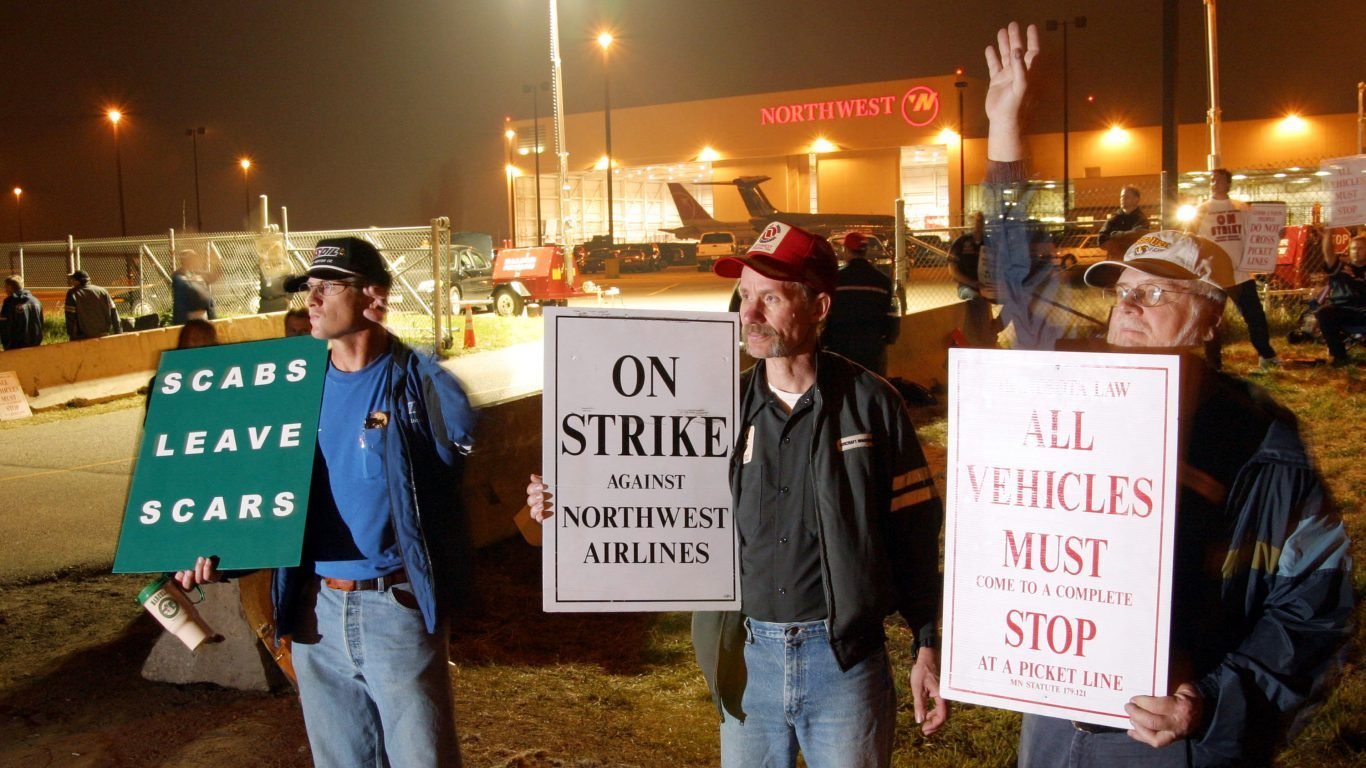
27. Northwest Airlines strike
> Duration: Aug. 20, 2005 to Nov. 6, 2006 (395 days)
> No. of strikers: 3,000
> Cumulative days off the job: 1,183,800

26. General Motors strike
> Duration: Mar. 8, 1996 to Mar. 22, 1996 (9 days)
> No. of strikers: 136,000
> Cumulative days off the job: 1,260,000
[in-text-ad-2]
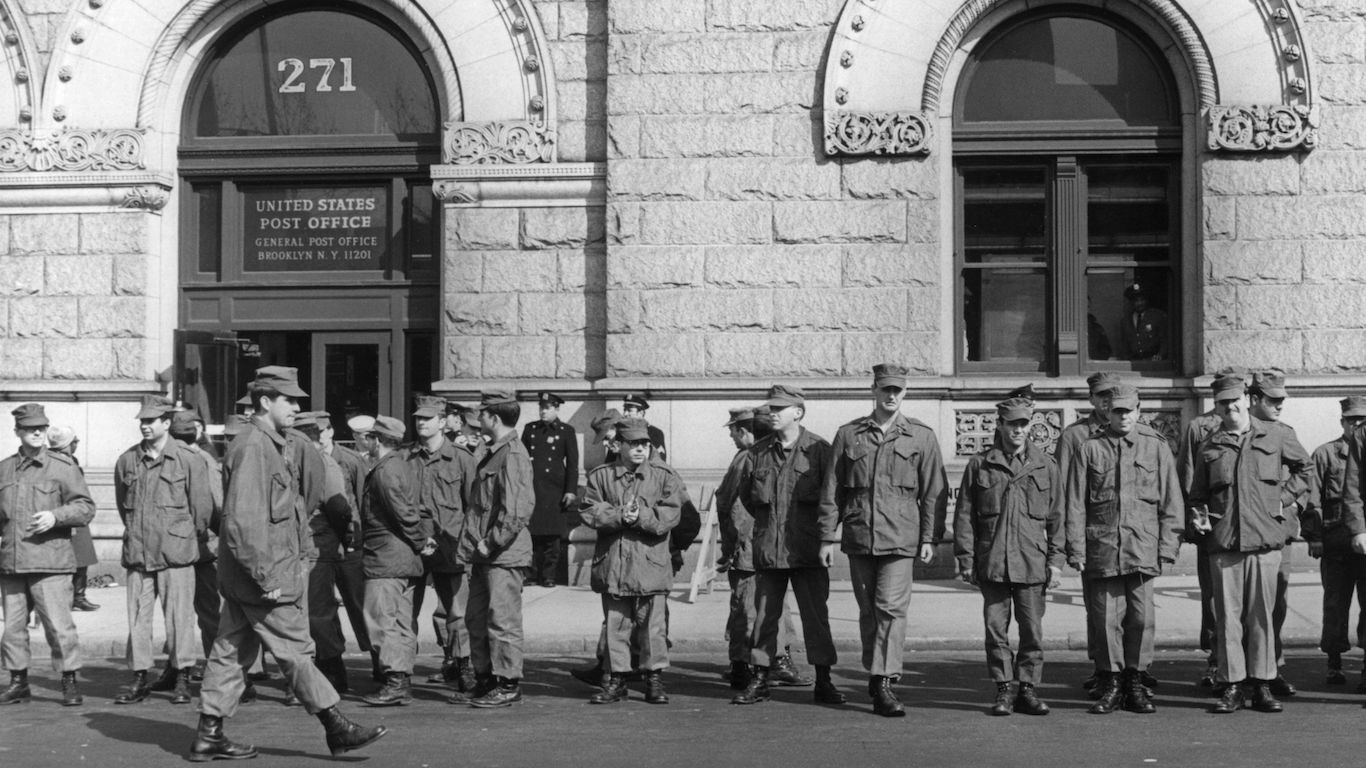
25. The U.S. Postal Strike of 1970
> Duration: Mar. 18, 1970 to Mar. 25, 1970 (6 days)
> No. of strikers: 210,000
> Cumulative days off the job: 1,260,000
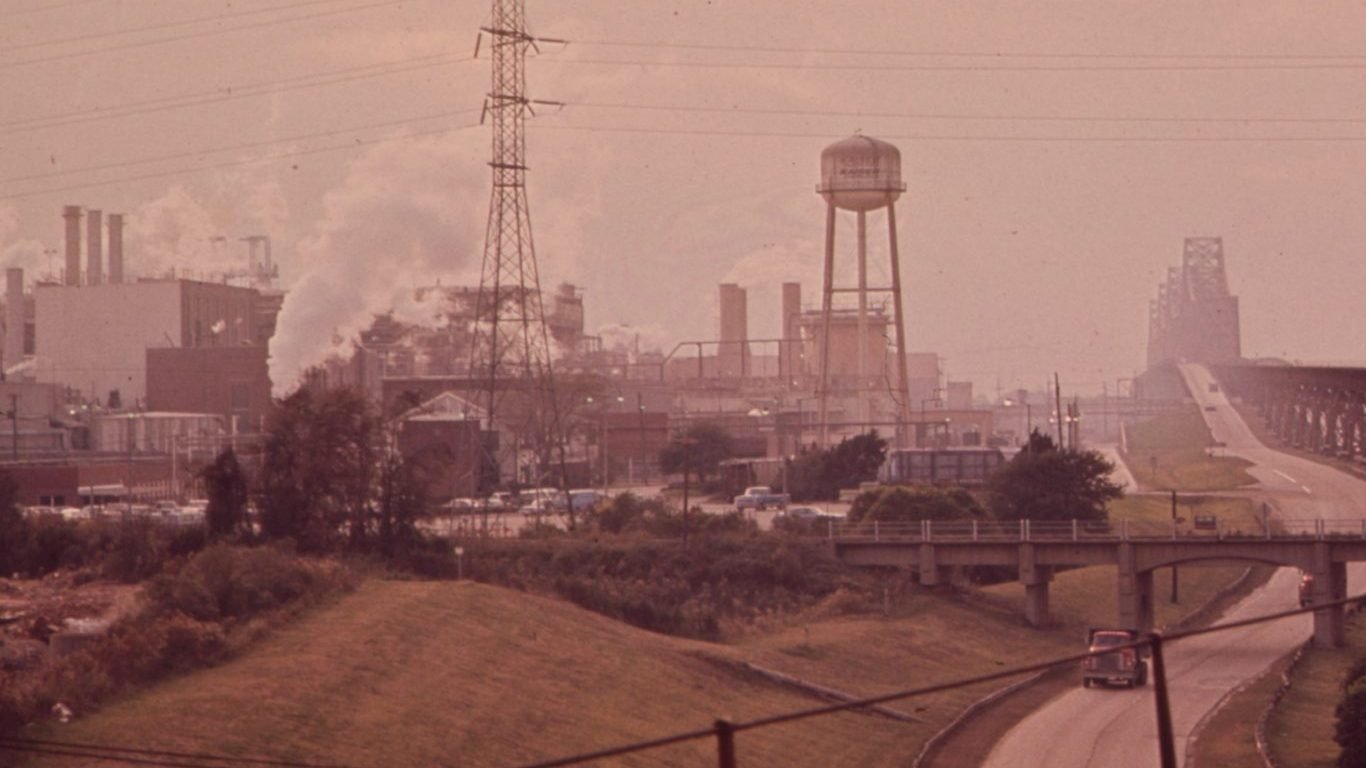
24. Kaiser Aluminum Corp. strike
> Duration: Oct. 1, 1998 to Sept. 18, 2000 (493 days)
> No. of strikers: 3,000
> Cumulative days off the job: 1,479,000
[in-text-ad]

23. Boeing strike
> Duration: Oct. 6, 1995 to Dec. 14, 1995 (47 days)
> No. of strikers: 33,000
> Cumulative days off the job: 1,551,000

22. 1934 West Coast Waterfront Strike
> Duration: May 9, 1934 to July 17, 1934 (50 days)
> No. of strikers: 35,000
> Cumulative days off the job: 1,750,000

21. United Auto Workers Strike
> Duration: March 5, 1996 to March 22, 1996 (14 days)
> No. of strikers: 136,000
> Cumulative days off the job: 1,904,000
[in-text-ad-2]

20. United Mine Workers strike
> Duration: May 10, 1993 to Dec. 14, 1993 (131 days)
> No. of strikers: 16,800
> Cumulative days off the job: 2,203,000

19. United Parcel Service Strike of 1997
> Duration: Aug. 4, 1997 to Aug. 19, 1997 (12 days)
> No. of strikers: 185,000
> Cumulative days off the job: 2,220,000
[in-text-ad]

18. 1913 Paterson Silk Strike
> Duration: Feb. 25, 1913 to July 28, 1913 (110 days)
> No. of strikers: 23,000
> Cumulative days off the job: 2,530,000

17. The New York City Tugboat Strike of 1988
> Duration: Feb. 16, 1988 to Dec. 20, 1993 (1,810 days)
> No. of strikers: 1,600
> Cumulative days off the job: 2,895,200
[in-text-ad-2]

16. Caterpillar strike
> Duration: June 20, 1994 to Dec. 3, 1995 (290 days)
> No. of strikers: 14,000
> Cumulative days off the job: 4,063,000

15. 1913 Paterson Silk Strike
> Duration: Feb. 25, 1913 to July 28, 1913 (110 days)
> No. of strikers: 23,000
> Cumulative days off the job: 2,530,000
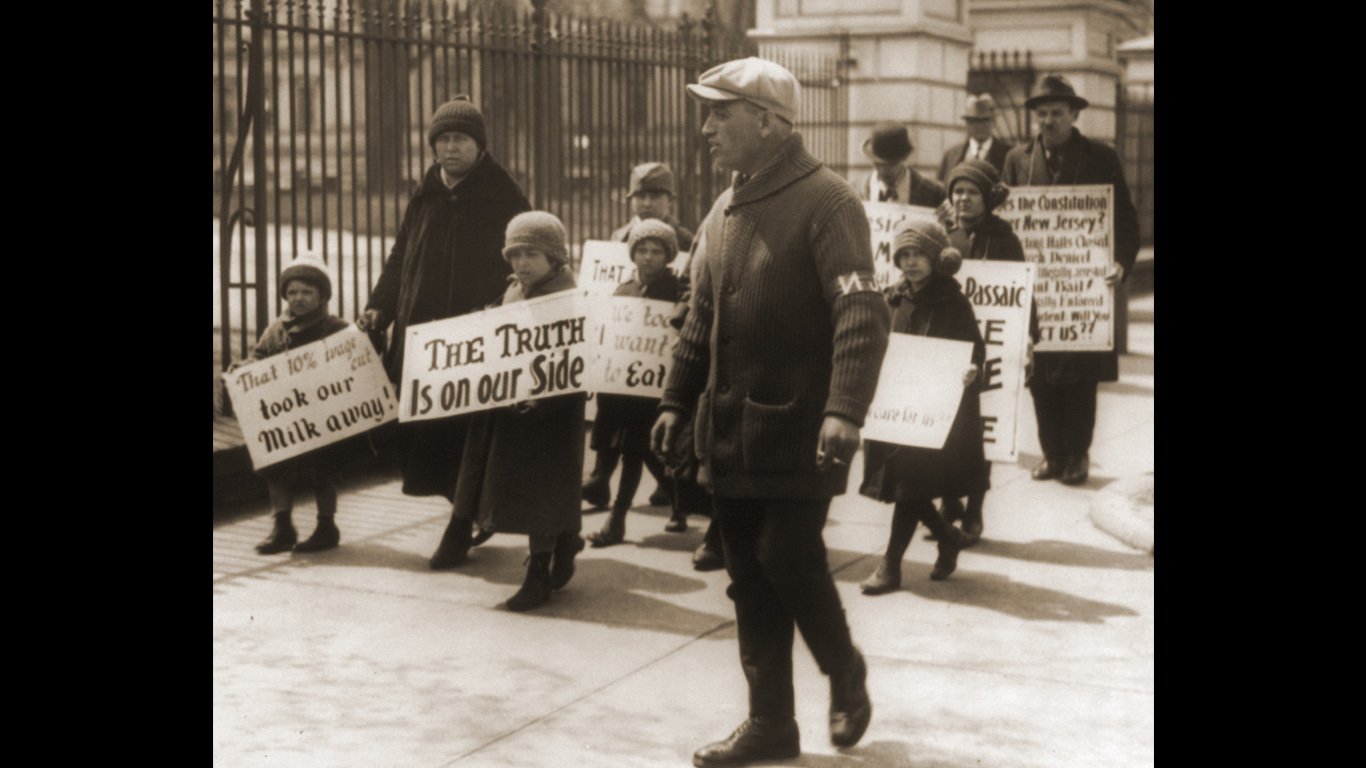
14. Passaic Textile Strike
> Duration: Jan. 25, 1926 to March 1, 1927 (281 days)
> No. of strikers: 15,000
> Cumulative days off the job: 4,215,000
[in-text-ad]
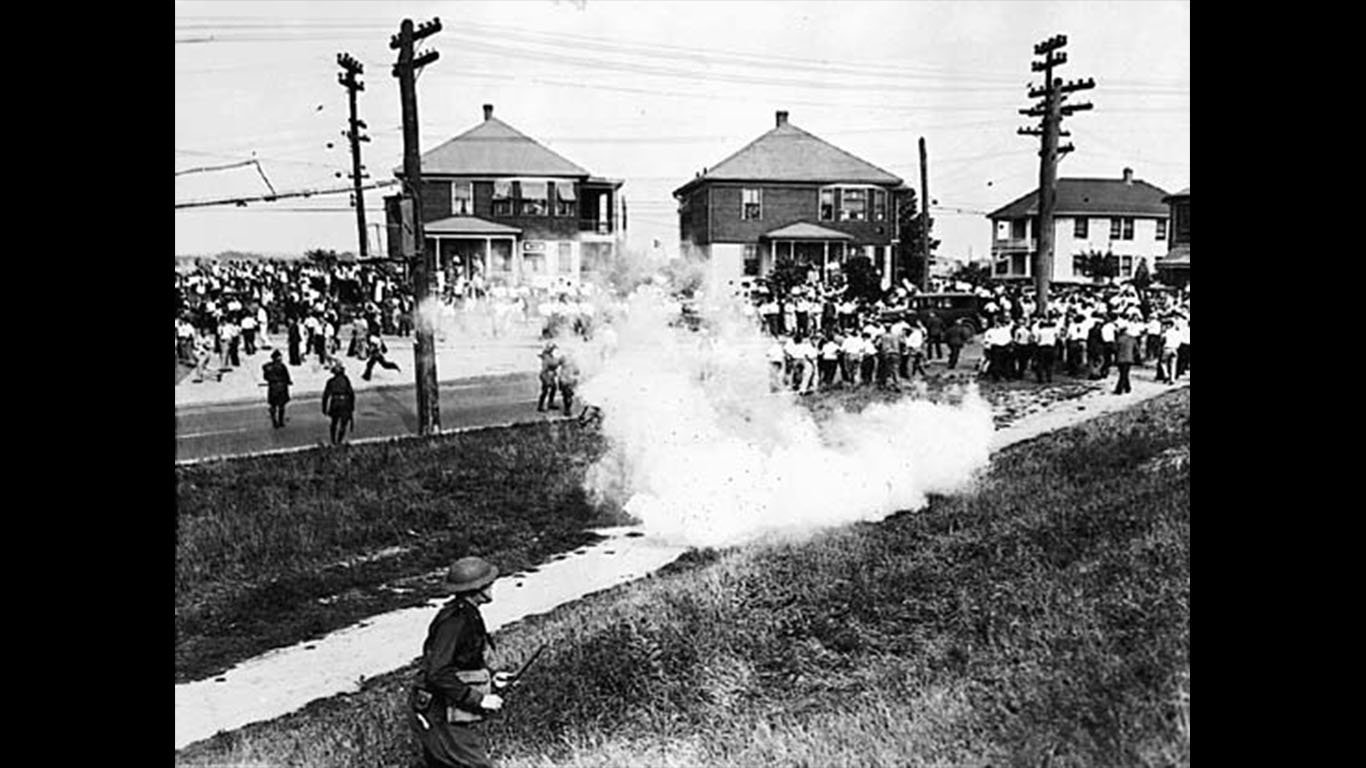
13. The 1934 Textile Worker Strike
> Duration: Sep. 3, 1934 to Sep. 23, 1934 (14 days)
> No. of strikers: 400,000
> Cumulative days off the job: 5,600,000
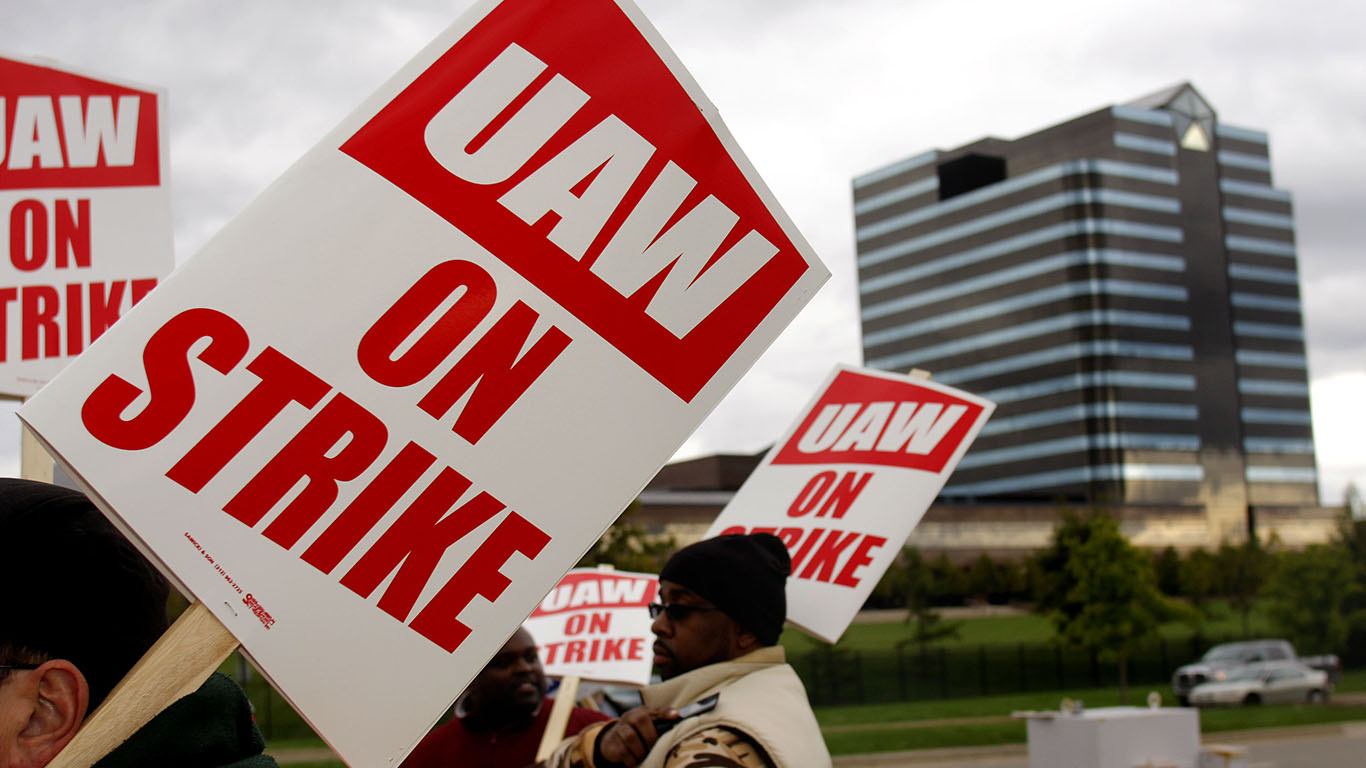
12. 1998 United Auto Workers Strike
> Duration: June 5, 1998 to July 29, 1998 (38 days)
> No. of strikers: 152,200
> Cumulative days off the job: 5,783,600
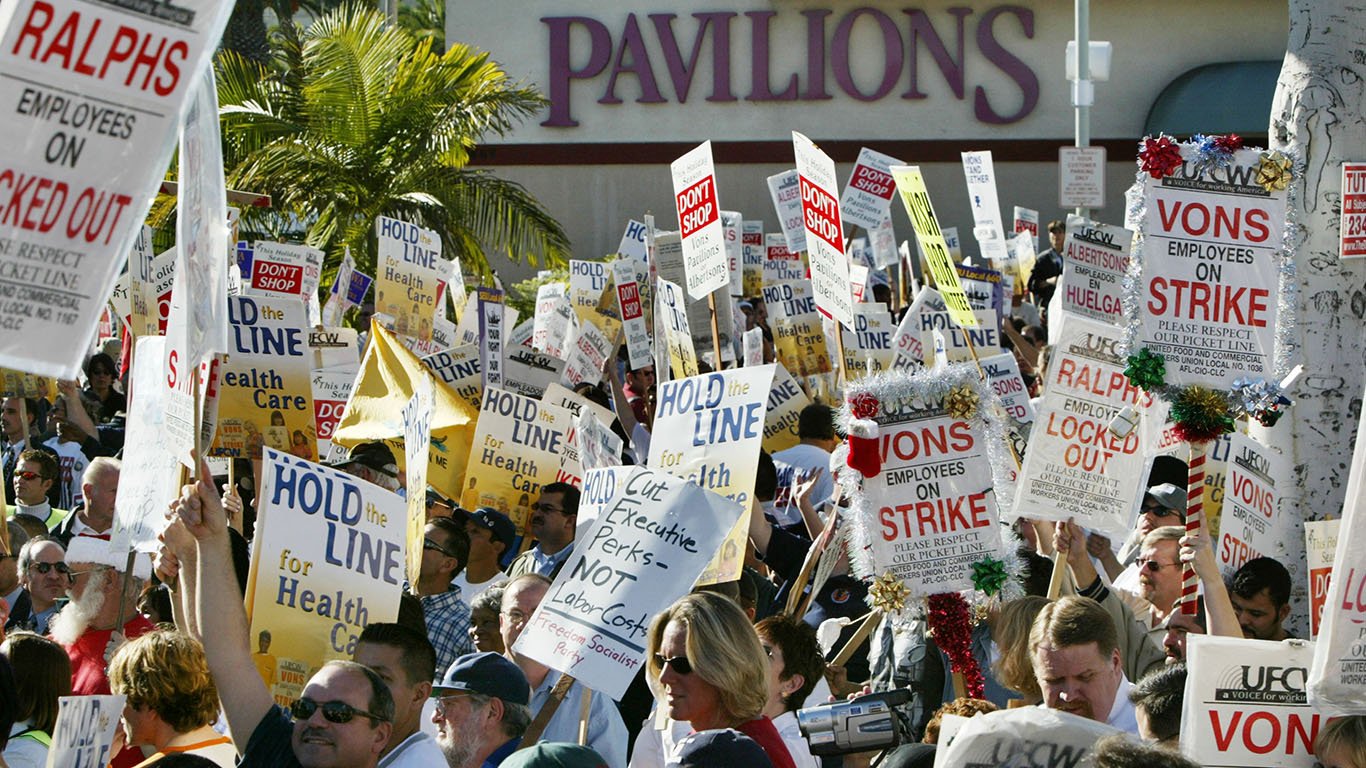
11. Southern California Supermarket Strike of 2003-2004
> Duration: Oct. 12, 2003 to Feb. 29, 2004 (93 days)
> No. of strikers: 67,300
> Cumulative days off the job: 6,258,900

10. The 1946 Union of Electrical, Radio and Machinist Workers’ Strike
> Duration: Jan. 15, 1946 to March 14, 1946 (42 days)
> No. of strikers: 174,000
> Cumulative days off the job: 7,308,000

9. The Great Southwest Railroad Strike
> Duration: March 1, 1886 to May 4, 1886 (47 days)
> No. of strikers: 200,000
> Cumulative days off the job: 9,400,000
[in-text-ad]
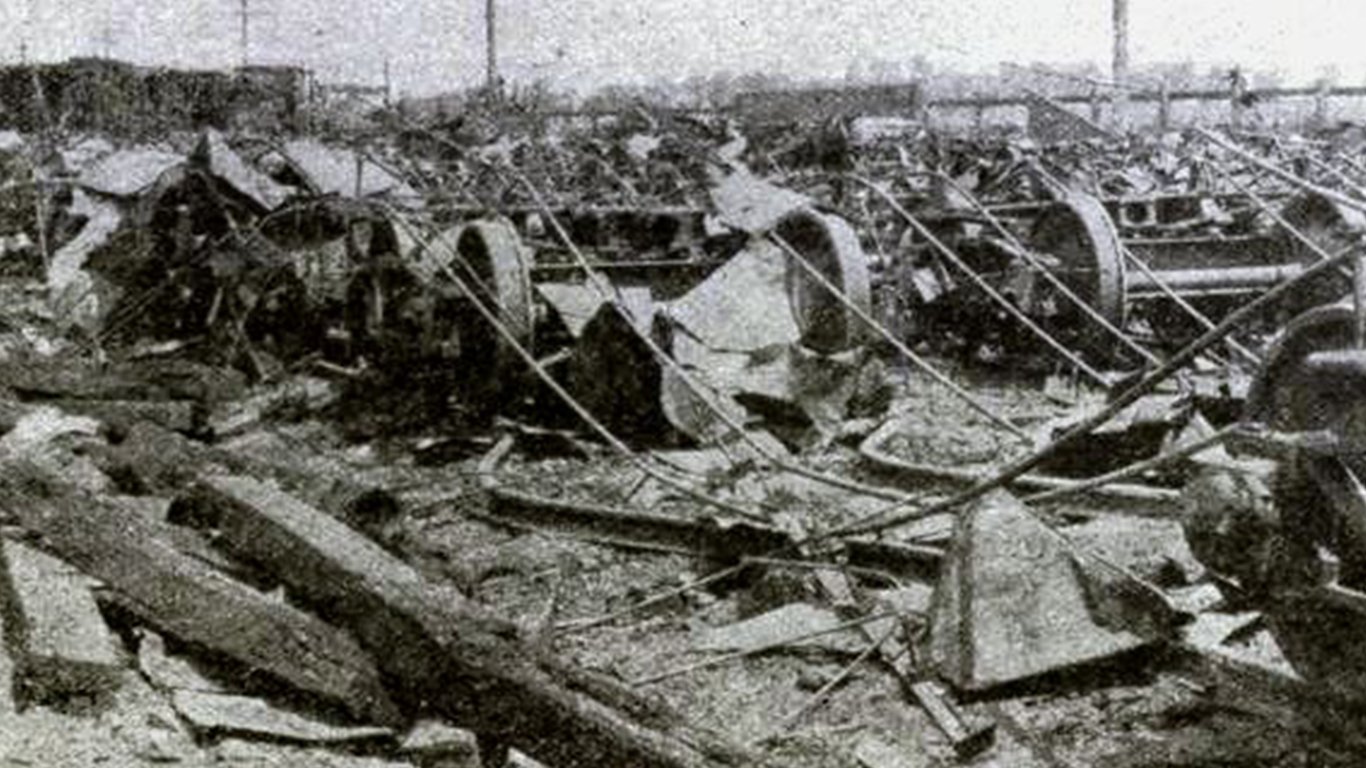
8. Pullman Strike
> Duration: May 11, 1894 to July 20, 1894 (51 days)
> No. of strikers: 260,000
> Cumulative days off the job: 13,260,000

7. Anthracite Coal Strike of 1902
> Duration: June 2, 1902 to Oct. 23, 1902 (103 days)
> No. of strikers: 147,000
> Cumulative days off the job: 15,141,000
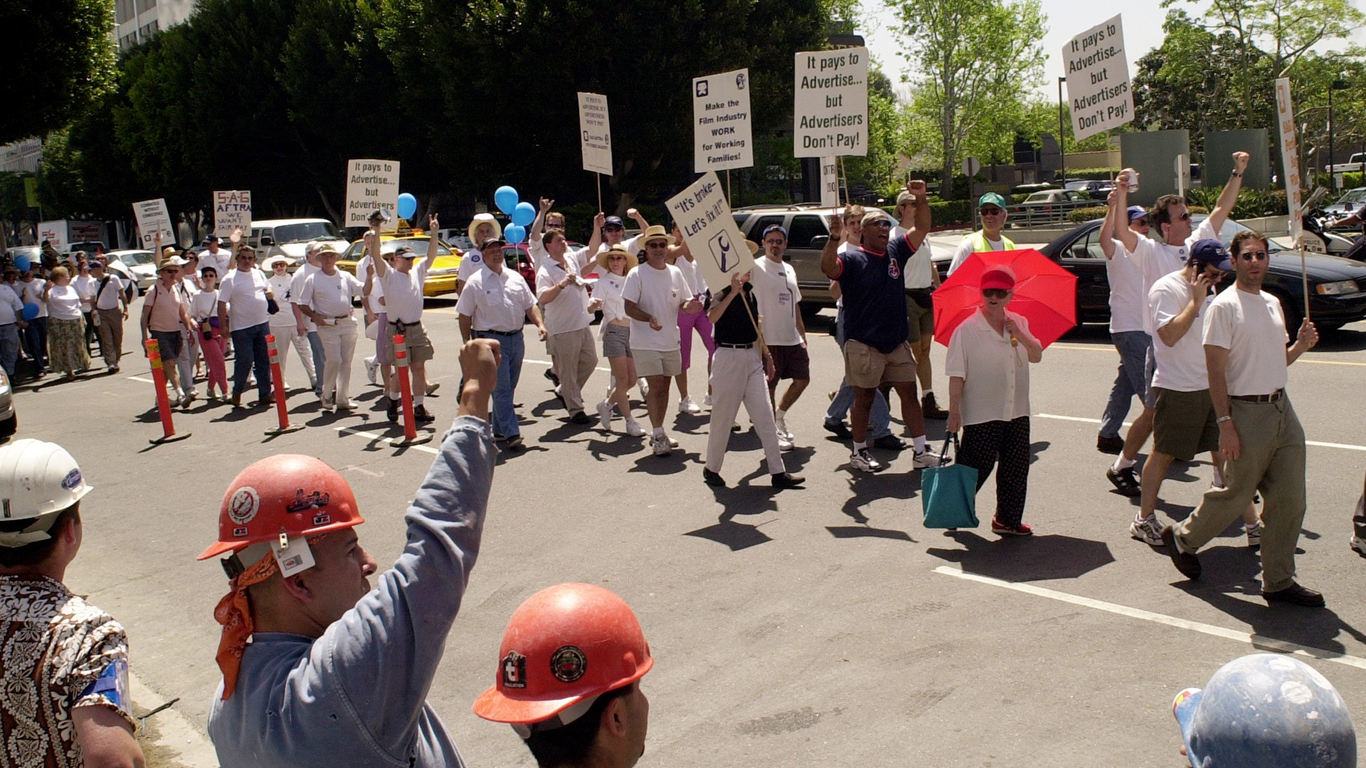
6. American Federation of Television and Radio Artists and Screen Actors Guild Strike
> Duration: May 1, 2000 to Oct. 30, 2000 (127 days)
> No. of strikers: 135,000
> Cumulative days off the job: 17,145,000
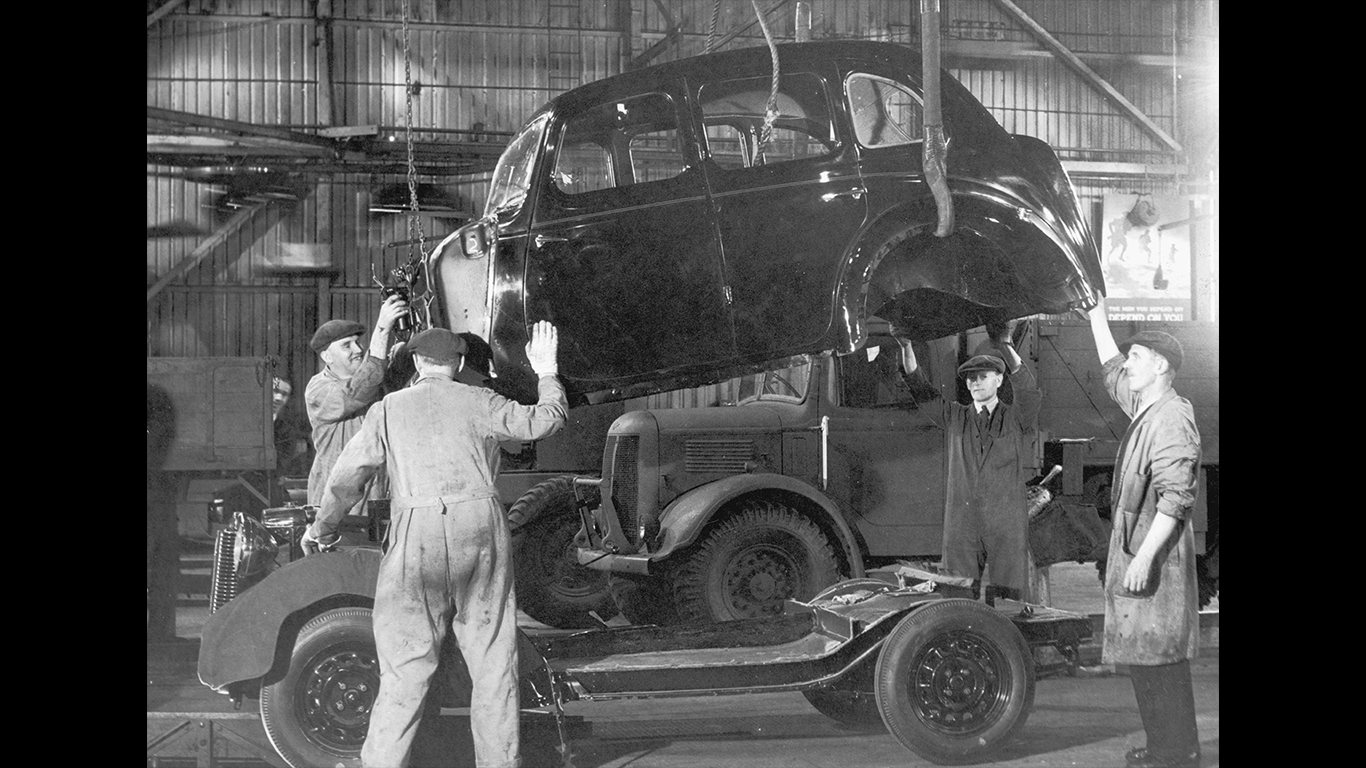
5. United Auto Workers Strike
> Duration: Nov. 21, 1945 to March 13, 1946 (77 days)
> No. of strikers: 225,500
> Cumulative days off the job: 17,363,500
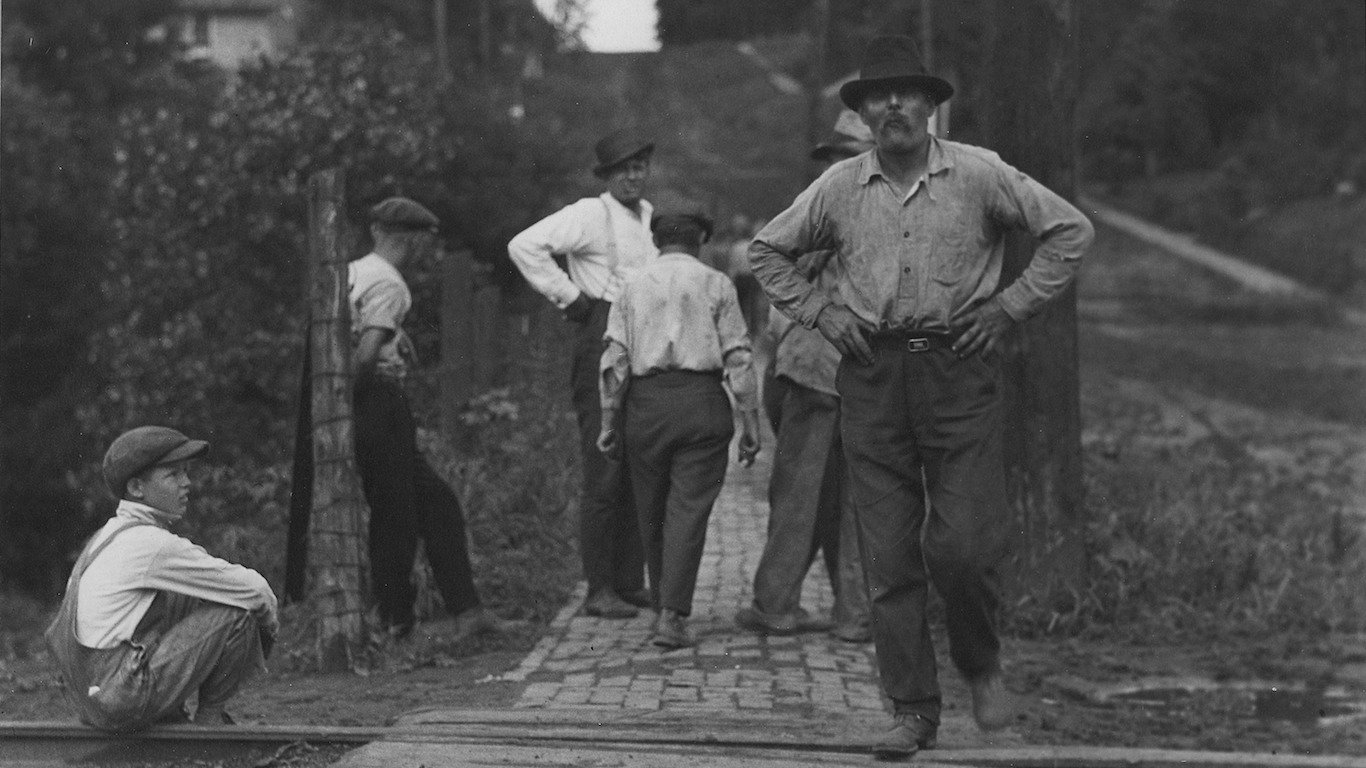
4. The Railroad Shop Workers Strike
> Duration: July 1, 1922 to Sep. 1, 1922 (45 days)
> No. of strikers: 400,000
> Cumulative days off the job: 18,000,000
[in-text-ad]
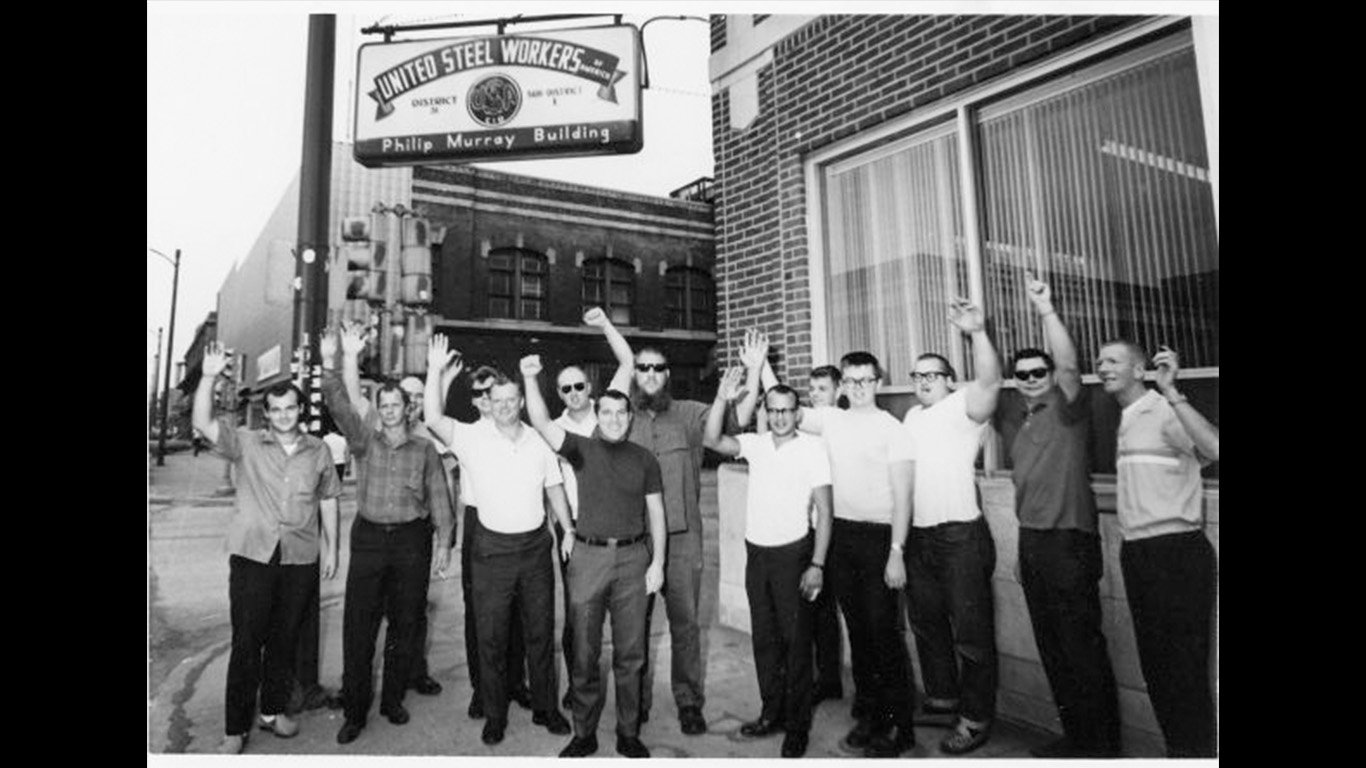
3. The Steel Strike of 1959
> Duration: Sep. 22, 1919 to Jan. 8, 1920 (76 days)
> No. of strikers: 350,000
> Cumulative days off the job: 26,600,000
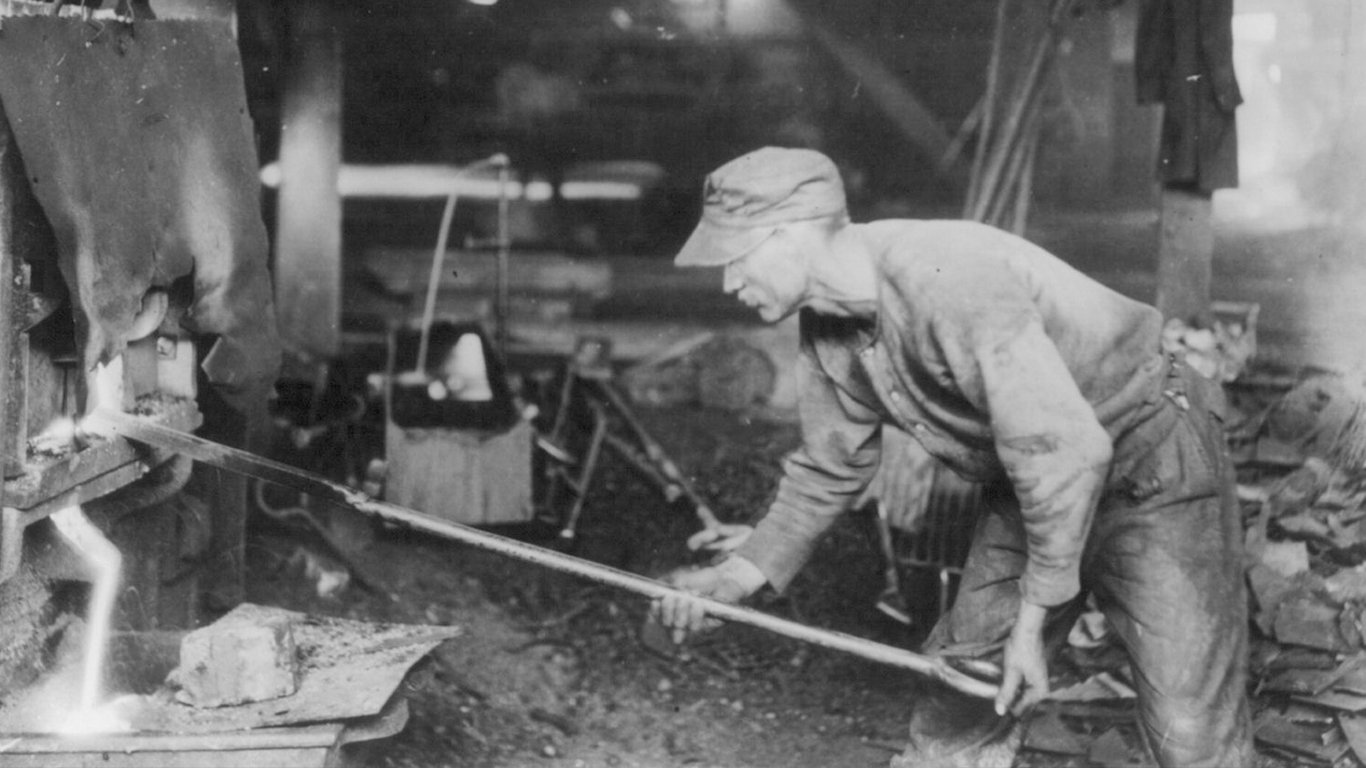
2. The Steel Strike of 1919
> Duration: July 15, 1959 to Nov. 1, 1959 (76 days)
> No. of strikers: 500,000
> Cumulative days off the job: 38,000,000

1. United Mine Workers of America Strike of 1946
> Duration: April 1, 1946 to Dec. 7, 1946 (176 days)
> No. of strikers: 400,000
> Cumulative days off the job: 70,400,000
Sponsored: Attention Savvy Investors: Speak to 3 Financial Experts – FREE
Ever wanted an extra set of eyes on an investment you’re considering? Now you can speak with up to 3 financial experts in your area for FREE. By simply
clicking here you can begin to match with financial professionals who can help guide you through the financial decisions you’re making. And the best part? The first conversation with them is free.
Click here to match with up to 3 financial pros who would be excited to help you make financial decisions.
Thank you for reading! Have some feedback for us?
Contact the 24/7 Wall St. editorial team.
 24/7 Wall St.
24/7 Wall St. 24/7 Wall St.
24/7 Wall St. 24/7 Wall St.
24/7 Wall St.
